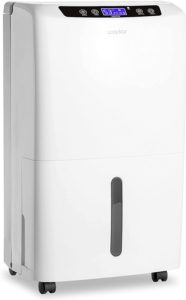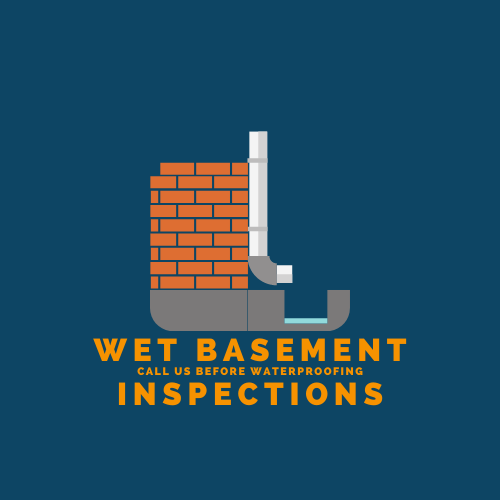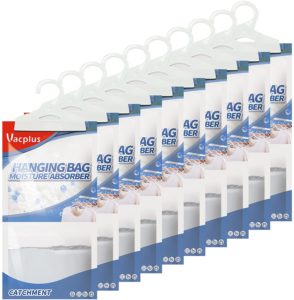Elevated humidity in a basement can show up as condensation dripping from cold water pipes in your basement, or water droplets forming on your cold HVAC ducts from running the air conditioning system during the summer time. There is often a lot of moisture in the air during the summer time, which is why the air feels muggy. This water vapor in the interior air of your home will condense onto cold metal just as easily as condensation forms on a cold glass of ice water on a hot summer day.

Running a dehumidifier in your basement during the spring and summer months of the year can keep basement humidity to a low. Even when sump pumps are professionally installed in a basement, large dehumidification fans are still installed on one of the basement walls when the sump pump systems are installed, which exhausts damp basement air from the home. This is because sump pump systems usually imply that while water is not leaking into the home in a conventional manner, water content in the air is still elevated even when a sump pump system is operating properly. With that said, dehumidifiers are very helpful with keeping humidity to a low during the wet seasons of a year, especially in climates such as the mid-west, From Ohio up to Maine. They are not as necessary to run during the winter time in colder climates since most moisture in the air freezes and leaves the air dryer during the winter.
So why not consider purchasing a portable dehumidifier and using it in your own basement during the wetter months of the year? It should be made clear that dehumidifiers are not going to stop the water from migrating through the foundation walls of your home, nor will they stop or even help to prevent foundation water leakage. Those leakage and seepage issues need to be addressed from the outside of the home, as described in the several other articles on this website. However, running a dehumidifier can assist in keeping the humidity levels down because they pull the moisture out of the air. This moisture fills up in the bucket of the dehumidification unit, which will either need to be emptied manually, or a hose can usually be installed on the drain valve of the dehumidifier and ran to a nearby floor drain. Connecting a hose to the dehumidifier and running it along to a nearby floor drain will undoubtedly be the best idea, as constantly emptying the bucket of the unit manually will prove to be a huge nuisance over a long period of time.
This is great because evacuating all of that moisture or water vapor from your basement air can help prevent mold growth, fungi, or other damp environments that will attract rodents, insects, and other unwanted pests.
Even if the basement walls are not leaking they can still allow moisture to seep into your basement, which will create a humid, damp, and muggy environment in your basement. This is because your basement block walls are porous. Water can seep through the pores of any block: clay-tile, concrete block; and even through solid poured concrete walls. Once this water seeps through the foundation walls of the home, it can evaporate into a gas, which leaves behind any hard mineral deposits that were in the water to accumulate on the walls of the home. You may have seen puffy white stains on your walls, which takes on a three-dimensional flaky form called efflorescence. (Not to be confused with effervescence. Effervescence is the bubbly fizz in your drink, while efflorescence is the weird white calcium mineral build-up stain on your foundation wall.)
It is important to point out that running a dehumidifier and painting the foundation walls with a sealant type of wall paint such as Dry-lok will not stop efflorescence from occurring, nor will it stop the water from migrating through your foundation wall. As already mentioned, the source of the water leakage needs to be addressed from outside of the home. But a dehumidifier can certainly help with removing musty smells and odors in a basement if used in along with the many dampness improvement techniques described on this website that apply to your specific property to prevent the water from accumulating around your home to begin with.
A couple of helpful tips to keep in mind when running a dehumidifier:
Air needs to be able to move and flow in order to pass through the dehumidifier, because the thing does not magically pull all of the water out of all of the basement air. The air needs to pass through the dehumidifier in order to dry out. This means that a damp or muggy basement should not have any closed off rooms, closets, cabinets, etc., where the air remains stale or stagnant. Stagnant damp air is typically a large contributor to mold and fungus growth in foundations.
Opening cabinet doors, closet doors, bathroom doors, and windows can improve air flow throughout a basement and prevent damp musty air and odors by allowing all or most air to reach the dehumidifier.
Installing vents on walls or sealed-off spaces in a basement can improve air flow and prevent mold growth by allowing a pathway for air from the sealed off sections in a basement to reach the dehumidifier.
Basement showers should always have a bathroom exhaust style fan which vents to the exterior of the home in order to not allow excess steam from showering to buildup in a basement and lead to mold growth.
Dehumidifiers are very effective in the vicinity of basement laundry facilities like washing machines and dryers, or near sump pumps. Often times, if mold growth is occurring in a basement, it can be visible on the overhead floor joists or sub flooring above the laundry area because of all of the water in use in this area. A washing machine drains a lot of water during each use, and a dryer is basically pumping out hot steamy air. For this reason it is also crucial to ensure that your dryer exhaust duct is installed properly and not damaged or leaking steamy wet air into your basement. A dehumidifier can be very effective when used in the laundry area of the basement, and this is convenient because there is usually a floor drain nearby to run the dehumidifiers hose for drainage. Sump pumps are also a source of damp air in a basement because the pit may be sitting there with several inches of water for a period of time before the pump is activated and the water discharged from the pit.
Furniture should be pulled back from exterior basement walls by a few inches at least so as to not trap stale air behind the couch, bookshelf, or armchair which leads to mold growth.
For smaller closets or corners of the basement where dampness is most common you can also buy hanging moisture absorber packages, which can pull excess humidity out of closets, cabinets, basements, bathrooms, laundry rooms, or garages.
In conclusion, there is more to drying out a damp basement or crawlspace than merely running a dehumidifier and painting the unfinished foundation block walls with a sealant paint such as Dry-Lok, but these can be effective strategies for creating a barrier that prevents the moisture from creating an environment for mold or fungus to grow. Just make sure to tackle all possible improvement recommendations as described elsewhere in wetbasementinspections.com and do not expect a dehumidifier and thick basement wall-sealant paint to completely “damp-proof” your home for you on their own.
These are paid links to products that I have used in my own home. Thank you.


I was very pleased to uncover this web site. I want to to thank you for your time due to this fantastic read!! I definitely appreciated every bit of it and I have you bookmarked to look at new things on your website.
Many Thanks!